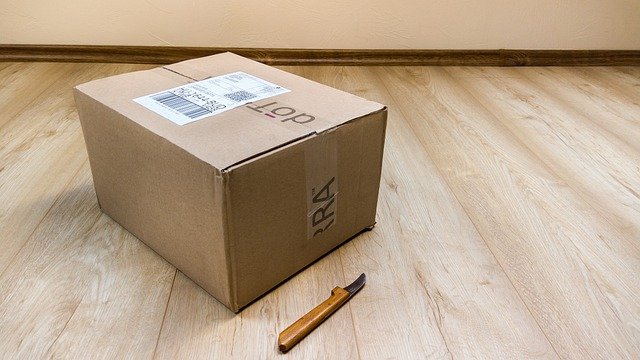

The beginning of the COVID-19 pandemic sparked a sense of uncertainly, not just about our health but also our working life and finances. Prior to the outbreak, in 2019, self-employment was booming – with more people becoming self-employed than ever before (peaking at 5 million, according to the Office of National Statistics).
This number dropped to 4.2 million throughout the pandemic as many self-employed workers headed back into employment to benefit from better financial security – through things such as the government furlough scheme and sick pay.
This is because the self-employed have access to very little finance aid during periods of ill health or injury. Unlike those in employment, the self-employed don’t have the luxury of a sick pay scheme. Most self-employed workers will need to rely on their own savings or government benefits such as employment and support allowance (ESA) or universal credit.
However, there is another option available to the self-employed, which could provide much needed financial aid. This is a financial protection policy called ‘income protection’ which can pay out up to 70% of your usual earnings if you’re unable to work due to ill health or injury.
Income protection for self-employed – the basics
In a nutshell, an income protection policy will pay out a percentage of your income (in monthly, tax-free payments) while you’re unable to work due to illness or injury. Depending on which provider you opt for, this could be between 50% – 70% of your usual earnings.
The payments that you receive can be used to cover anything that your income would normally be used for. This could be to ensure your mortgage payments or rent is kept up to date, as well as household bills and daily living expenses – such as your daily food shop.
Essentially it allows you to carry on with your current lifestyle without the need to make drastic cutbacks or having to borrow or ask for financial help from others.
How does it work?
Income protection will provide you with cover for a specified period of time (this is known as the policy term). You’ll need to pay a monthly premium in order to keep your cover valid.
To work out the price of your monthly premium, you’ll need to provide key information during the application. This includes personal details (such as your age, medical history, smoking status, occupation and lifestyle), as well as details about your chosen policy.
At any point during the term, if you were to be diagnosed with an illness or sustain an injury that prevented you from working, you could make a claim on your policy.
Once your deferred period comes to an end, and if you’re still unable to work, your payments will begin.
These monthly payments will continue until you make a full recovery and can return to work, until the payment period comes to an end, until the policy expires or until you retire – whichever happens first.
Before taking out an income protection policy, it’s a good idea to go through your average monthly spending to get an idea of how much you need to ensure you can live comfortably and cover everything you need to.
Important policy features you should be aware of:
Definition of incapacity: Your policy will come with a ‘definition of incapacity’ – incapacity refers to the inability to do something and, in the case of income protection, this is the inability to work.
Most policies will come with an ‘own occupation’ definition, which will allow you to claim if you’re unable to do your own job. However, it’s also possible to have a ‘suited tasks’ definition, which means you must be unable to do your own job as well as other jobs related to your skills and knowledge, and an ‘any tasks’ definition (which often requires total disability for a claim to be made).
Payment period: This is how long your policy will pay out to you. This could be on a short term (limited) basis or long term (full term) basis.
For the self-employed a long term payment period could be beneficial as this offers the opportunity to receive payments for the rest of your working life – if you were unable to ever work again. This is in contrast to a short term payment period which will pay out to you for a maximum of 1 – 2 years.
Deferred period: You should be aware that you won’t receive your payments immediately. Income protection policies include what’s known as a ‘deferred period’. This refers to an agreed period of time which must pass in order for your payments to commence.
This will be agreed at the point of application, typically you have the option of 4, 8, 13, 26 or 52 weeks. If you’re still unable to work once your deferred period has come to an end, your payments will commence.
For the self-employed, it’s likely you’ll want the shortest deferred period in order to benefit from your payments as quickly as possible. Some providers even offer a ‘back to day one’ deferred period which could allow to you start receiving your payments within a matter of days.
Premium type: This is how you’ll pay for your cover. Premiums are often guaranteed (which means they remain the same throughout the policy lifetime), reviewable (which means they can be subject to change due to certain factors) or age-banded (which means they increase each year as you age).
What policy options do you have?
If you’re self-employed and the owner of your own limited company, you have the option of taking out ‘executive income protection’.
This differs from standard income protection as the premiums can be paid for by your business and claimed as a business expense – providing a tax efficient way of securing cover.
Rather than the monthly payments being paid directly to you, they’ll be paid to the business for you to decide how best to spend them.
If you’re unable to work, you could use the payments to supplement your income. Alternatively, you could use them to replace any lost profit as a result of you being unable to work, or you could use them to help with the daily costs of running a business.
If you work as a sole trader or don’t own your own limited company, you’ll only be able to take out a standard income protection policy
How can you secure cover?
There are many income protection providers out there, your first option is to gather information from each and secure quotes to find out which provider offers the best policy to meet your needs. However, taking on this task yourself could be a lengthy process.
Your second option is to take out a policy through a comparison site – as this will gather information from a range of providers on your behalf, saving you the time.
However, this type of website simply provides you with standard information as well as quotes. They don’t allow you to speak to anyone or ask important questions to establish what’s best to meet your needs.
Your third, and final, option is to secure cover through a broker – like Reassured Advice. Like a comparison site, a broker can provide you with quotes from a variety of providers. Alleviating you of this time-consuming task.
The bonus about taking out cover through a broker is that you have a dedicated team member to take you through the whole application process and answer any questions you might have.





